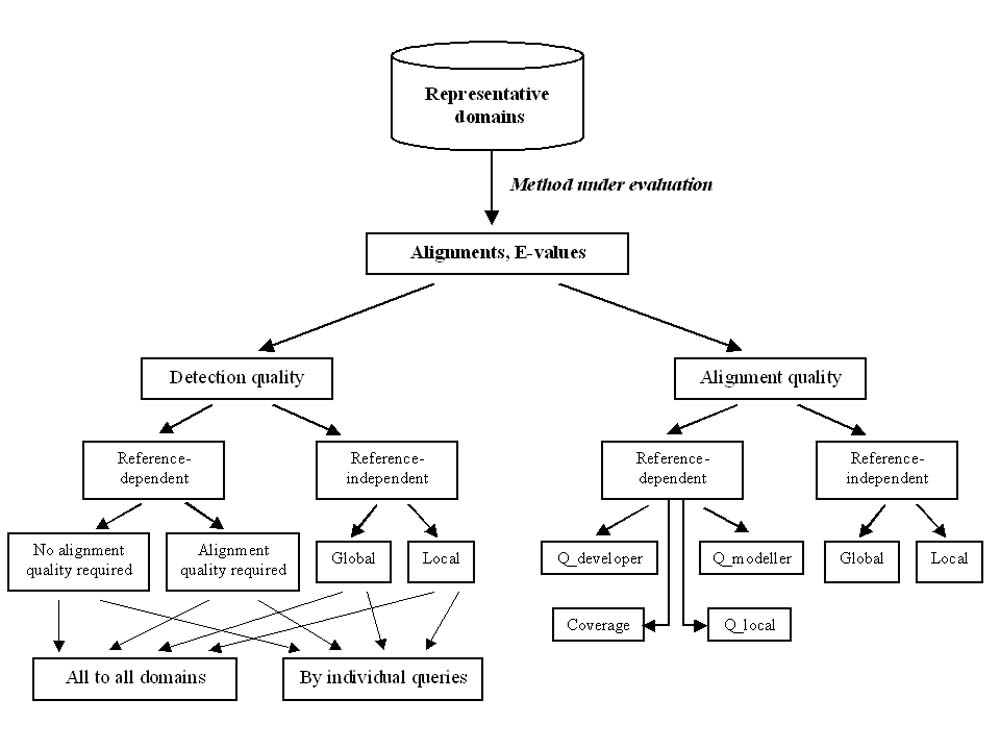
Workflow of evaluation protocols. The method under evaluation is run on the diverse set of representative SCOP domains, using each representative as a query for the comparison with the rest domains. The search results are then submitted to the evaluation of the quality of similarity detection ("Detection quality"). This evaluation, based on ROC-like sensitivity curves, is done in both reference-dependent and reference-independent fashion. Reference-dependent evaluation is based on a pre-computed gold standard of similarity relationships between the domains, and on reference (structure-based) alignments. This type of evaluation is performed in two modes that differ in the definition of a true positive hit. The first, more traditional mode ("No alignment quality required"), considers the prediction of similarity regardless of the quality of produced alignment, i.e. a wrong alignment of two similar domains has the same merit as the correct one. The second mode ("Alignment quality required") demands a certain level of alignment accuracy for the hit to be considered a true positive. Reference-independent evaluation does not use any gold standards but is based on the quality of structural superposition suggested by the hit. The quality measures are based on the GDT_TS score and are applied in two modes: global (assessing the superposition over the whole query length) and local (assessing the superposition over the alignment length, however short it is). Both reference-dependent and -independent evaluations are performed on the whole pool of search results ("All-to-all domains"), as well as on the separated results for individual queries ("By individual queries"). The evaluation of alignment quality regardless of assigned statistical significance is performed on the set of structurally similar domains, in both reference-dependent fashion (based on gold-standard structure-based alignments) and reference-independent fashion (based on GDT_TS-like measures for the structure superposition suggested by the evaluated alignment).